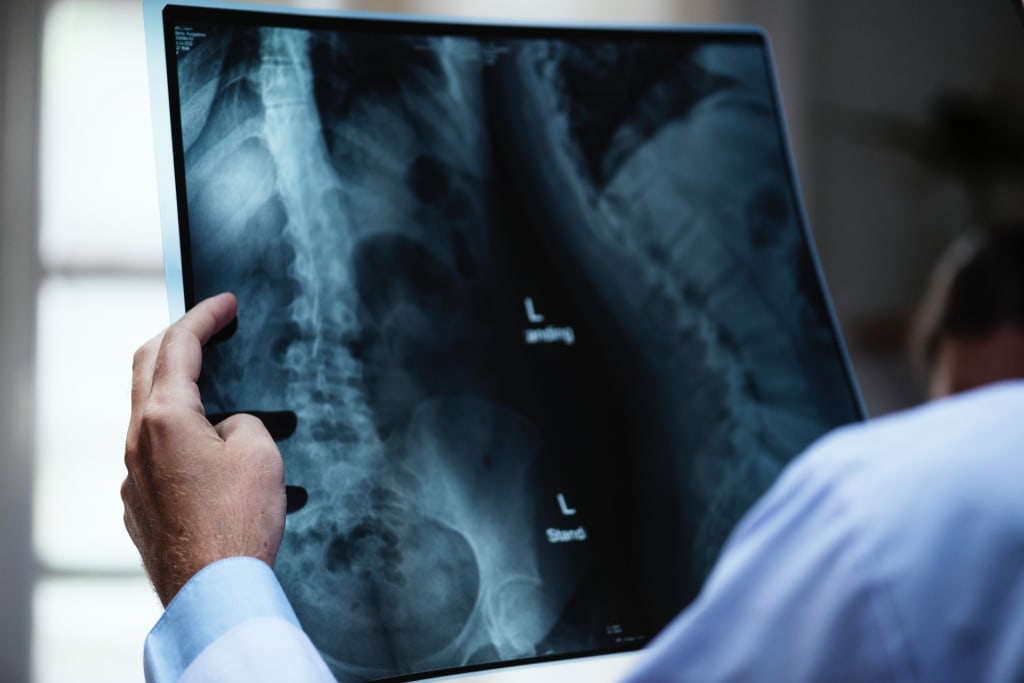Why Is it Important to Reduce Exposure to X-Ray Radiation?
Prolonged exposure to X-Rays can be harmful.

X-rays, or electromagnetic radiation waves, have been an incredible asset to modern medicine and dental services, since their discovery in 1895. These invisible waves pass very easily through soft tissue, like human skin and muscle, but are absorbed by harder substances, such as bones and teeth. These attributes make x-rays great for creating images of the inner human body.
Modern medical x-ray equipment directs electromagnetic radiation waves towards a specific part of patients’ bodies, and film placed on the other side of the x-ray equipment captures the resulting images. Different body tissues appear in different shades of white and black, depending on the amount of radiation being absorbed. Bones appear white, muscles and fat look grayer, and lungs appear black. The convenience of x-ray imaging helps doctors, surgeons, and dentists detect broken bones, bone fractures, arthritis, cavities, scoliosis, infections, pneumonia, and even cancerous tumors.
However, prolonged exposure to large amounts of x-ray radiation can be harmful. While the amount of radiation that patients are exposed to during a typical x-ray is minimal, it is still important to consider the risks of x-ray exposure. Aside from the patients being x-rayed, technicians operating x-ray machinery must be sure to protect themselves from exposure to radiation, as well. Let’s take a look at why it is important for both patients and technicians to reduce exposure to x-ray radiation.
Cancer
Prolonged exposure to x-ray radiation has been known to cause cell mutations and subsequently cancer, in some cases. In fact, the World Health Organization classifies x-ray radiation as a carcinogen. This is especially relevant for radiology technicians, who work with x-ray machines every day. Prior to the 1950s, technicians and other medical workers who worked closely with x-ray machines were at a greater risk of developing various types of cancer, including thyroid, blood, breast, and skin.
Today, lead aprons are worn by both patients and technicians during radiology sessions. These aprons are specifically designed to protect against x-ray radiation. The high density of the lead inside of each apron blocks 90-95 percent of all the radiation, largely neutralizing any risks.
Scatter Radiation
X-ray radiation can spread and scatter across the room during a radiology session. This takes place anytime an x-ray beam comes into contact with an object. Additionally, x-ray equipment can leak small amounts of radiation. This ‘scatter radiation’ is generally regarded as one of the top occupational hazards for x-ray technicians. Thus, technicians should always wear lead aprons and follow the ‘six feet’ rule while conducting an x-ray; always stay at least six feet away from the beam, the patient, and the machine during an x-ray. Technicians also utilize goggles while using x-ray equipment, to protect their eye health.
However, scatter radiation isn’t only a concern for technicians. Patients who receive an x-ray while not properly protected could expose a different, unintended, part of their body to scatter radiation. Consequently, scatter radiation is a major reason why it is so important to reduce x-ray radiation exposure.
Reproductive Complications
Women who are pregnant, or believe they could be pregnant, are usually told not to undergo any x-rays, due to the possibility of radiation causing a pregnancy complication. When it comes to children, though, x-ray radiation can cause problems long before pregnancy.
Excessive and prolonged exposure of reproductive organs to x-ray radiation can cause genetic mutations, that could potentially be passed on to children. While it would take a great deal of radiation to put a patient or technician’s reproductive organs at significant risk, the chance of reproductive complications is not a concern to ignore.
Whether you’re about to have an x-ray done, or are a technician who performs x-ray examinations frequently, be sure to always properly protect yourself from x-ray radiation.





Comments
There are no comments for this story
Be the first to respond and start the conversation.